Статьи журнала - Nanotechnologies in Construction: A Scientific Internet-Journal
Все статьи: 409
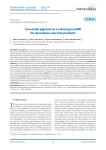
Iron oxide pigment as a coloring nanofill for decorative concrete products
Статья научная
Introduction. Current research on the performance properties of decorative concrete, when added to the concrete mixture of nano pigments are more recommendatory. In the academic literature, it is recommended to introduce pigment in the amount of about 5% of the total cement mass when creating improvement elements. The recommendations described above often demonstrate the potential for using nano pigments in terms of the influence of the amount of nano-additive applied on the uniformity of the coating texture. Characteristics such as intensity and retention time of the resulting color are also taken into account. In RF we do not have approved regulations on how to use pigments for concrete coloring. Pigments are obtained mainly from iron oxides due to their availability and low toxicity to the human body, and are promising nanomaterials in construction. Methods and materials. The study is aimed at the use of iron oxide pigment obtained from a spent iron oxide dehydrogenation catalyst as a coloring nanofiller and improving the strength characteristics of decorative concrete products. Spent iron oxide catalysts containing iron oxide particles are considered as a by-product of chemical production. The purpose of this study is to use a pigment (in the form of Fe2O3 and Fe3O4) obtained from the composition of a spent iron oxide catalyst as an additional binder and coloring nanomaterial in the composition of decorative concrete products. The effect was evaluated by testing mechanical properties such as strength, color, water absorption, water and frost resistance. Results. The research results have shown that the use of nanopigment in the technology of concrete production improves the properties of cementing composites (cement) and allows you to change the color of products. Conclusion. This study consists in the application of an iron oxide nanopigment obtained from a spent catalyst for the dehydrogenation of olefins and alkylaromatic hydrocarbons in decorative concrete products with the provision of mechanical characteristics and chromaticity of products.
Бесплатно
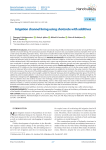
Irrigation channel lining using shotcrete with additives
Статья научная
Introduction. Shotcrete lining is the most economical and quite fully mechanized in production among all the known varieties of concrete linings. The construction practice of hydraulic structures has accumulated numerous examples of the use of a wide variety of building materials in lining – from stone to modern films made of synthetic resins. Despite the very active efforts to find more suitable materials, concrete lining will remain the main one for a long time. Accordingly, concrete lining requires further improvements, increasing durability and reducing cost. Methods and materials. The studies were carried out by the comparison method of laboratory tests of shotcrete with nanostructured surfactants additives. In the form of nanostructured additives, SCL (sulfite-cellulose liquor), NAR (neutralized air-retaining resin), cotton soap and bitumen were used in various consistency. The tests were conducted on strength properties, shrinkage, tension deformation, adhesion strength and water permeability. Structural changes in the properties were studied by electron-microscopic analysis. Results and discussion. It is established that the optimal proportion of SCL additive to the shotcrete gauged water, under the spraying condition, is 0.5% by the cement weight. NAR additive is not observed. When cotton soap additive with gauged water are added into the shotcrete, the water content in the placed shotcrete increases as the amount of the additive added increases, the optimal cement content in the shotcrete is observed when 0.3% cotton soap additive by the cement weight is added. The “rebound” decreases when the additive proportion grows. The 0.3% SCL additive by cement weight added in 1:4 dry mixture shotcrete increases its compression strength by 16%, bending strength by 1% and tension strength by 20%. Conclusion. All nanostructured surfactant additives increase the shotcrete shrinkage. The shotcrete with SCL additive shows the smallest increase in the shrinkage, and the largest – with bitumen emulsion. The additives used in shotcrete significantly increase its tension deformability, and in a wide range reduce the values of the shotcrete instantaneous elasticity modulus, i.e. enhance its plastic properties. The surfactants and bitumen emulsion reduce the adhesion strength between shotcrete and reinforcement, however, it remains at a higher level than that of conventional concretes.
Бесплатно
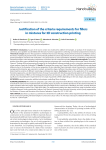
Justification of the criteria requirements for fillers in mixtures for 3D construction printing
Статья научная
Introduction. As part of the task to create new materials for additive technologies, an analysis of the situation was carried out, and a problem was identified with the lack of common approaches to selecting raw material components for mixtures. Theoretical concept. Based on the approaches of fundamental structure rheology, physicochemical mechanics of disperse systems, the theory of packing of granular media, we theoretically justified the criteria requirements for the characteristics of fillers and suggested quantitative criteria for their evaluation. It was proposed to use these quantitative criteria for a preliminary comprehensive assessment of fillers when designing compositions of mixtures for 3D construction printing. Materials and methods. The characteristics of the fillers were evaluated using scanning electron microscopy with a scanning electron microscope Thermo Scientific™ Phenom™ Desktop SEM and processing of images by the ParticleMetric software package as well as using laser granulometry with a laser analyser of particles Analysette 22. Results. We assessed the cement and 5 types of fillers that had different sizes and played different roles in the formation of the mixture properties. We also identified their estimated criterial characteristics, including the average particle diameter, gra-nulometric constant, and particle shape coefficient. Boundary values of these characteristics were determined for particles of different morphology and dispersion degree. Conclusion. Based on the application of the suggested theoretical approaches, we determined the lines of research associated with obtaining experimental patterns of the impact of the criterial characteristics of fillers on the rheological characteristics of mixtures as well as with these characteristics according to their significance and justifying the requirements for the range of quantities of fillers depending on their size, shape, and granulometry.
Бесплатно
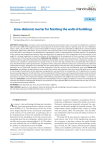
Lime-diatomic mortar for finishing the walls of buildings
Статья научная
Introduction. At present, when performing finishing and restoration work, more and more preference is given to dry lime mixes (DBM). Wide opportunities for the production of dry lime-cement mixes are opened up by the use of diatomite, which is both a dry mix filler and an active mineral additive. Previous studies have confirmed the effectiveness of heat treatment of diatomite. After firing at 600–800оC, activity increases when interacting with calcium oxide hydrate. This is explained by the fact that at 600–800оC clay substances are dehydrated to metakaolinite, which is characterized by increased reactivity. The properties of dry mixtures and compositions based on them are affected by the particle size of the components of the dry mixture. In this regard, it is of great importance to study the influence of the dispersion of the components of the dry mixture on the formation of the structure of the finishing compositions. Materials and methods. To study the active centers of the diatomite surface, we used the indicator method for determining the distribution of adsorption centers. Determination of the compressive strength was carried out on a DOSM-3-1 dynamometer on samples 3x3x3 cm in size at the age of 28 days of air-dry hardening of the compositions. The determination of the granulometric composition of the components of the dry mixture was carried out by the method of sedimentation analysis. Adsorption was estimated from the optical density measured with a PEC photoelectrocalorimeter. To study adsorption at the “liquid-solid” interface, the initial components of the dry mixture, lime and diatomite, were used. Results and discussions. Accordingto the data obtained, it was found that a particle size reduction of the dry mixture filler leads to an increase in the strength characteristics of lime-diatomite compositions.It was found that the introduction of C-3 additive into the water favorsincreasing dispersion of hydrated lime, improving plasticity finishing mixture and improving the physical and mechanical characteristics lime-diatomaceous compositions.It is proposed to introduce sulfate additiveinto the formulation of the aluminumdry mixture. Increase in the compressive strength of the finishing composition with addition of aluminum sulfate 1.5–2 times was observed. Conclusion. It has been determined that the developed dry mixture is highly competitive, in terms of technological and operational properties,withprototype. Moreover, the production of the proposed DBM is more economical due to the use of local raw materials and domestic additives.
Бесплатно
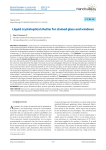
Liquid crystaloptical shutter for stained glass and windows
Статья научная
Introduction. Liquid crystal as a nanomaterial has found application in science, engineering and technologies. The unique physical properties of liquid crystals make them sensitive to external influences. The article presents the results of an experimental study of the flexoelectric effect in a liquid crystal, when shear deformations occur, thin layers of which can serve as an optical shutter for the stained glass windows of buildings. Materials and methods. Nematic liquid crystals with a homeotropic orientation of molecules 10÷100 μm thick were used by the birefringence method. Shear frequency 1 kHz. Methods. The experimental cell was assembled from two glass plates in the form of a flat capacitor, spacers were placed between the glasses, which set the sample thickness. A source of shear vibrations was located on the side of the microscope stage, which was connected to the LC cell using a thin waveguide. Results and discussion. According to the geometry of the problem, the director is headed vertically parallel to the Z axis, the velocity vector of the plate vibrations is horizontal along the X axis. The orientation of the liquid crystal molecules in the volume is characterized by the angle θ. An elastic-viscous wave propagates between the moving and stationary substrates of the LC cell, which leads to a perturbation of the initial homeotropic orientation of the director field. The dependences of the first and second harmonics of the shear-induced EMF, as well as the optical signal, on the plate oscillation speed are obtained. They have a threshold nature of occurrence at a critical speed υc~8 mm/s, while the liquid crystal molecules are oriented at an angle θс. The temperature dependences of EMF harmonics far from the nematic – isotropic liquid phase transition showed that when approaching the phase transition, the regression of the signal U1ω stops, and then its value increases up to the temperature transition of the nematic – isotropic state TNI. The magnitude of the optical signal I2ω/Io(T), approaching the phase transition, increases, which is explained by the increase in the amplitude of the director oscillation Θd. Conclusion. The article considers the flexoelectric effect observed in thin layers of nematic liquid crystals with homeotropic orientation of molecules placed between two glass plates. The occurrence of the effect has a threshold character, the critical strain rate is about 8 mm/s. The conditions and parameters of the effect (shear amplitude, sample temperature) on a condenser cell for various liquid crystals are considered. It is proposed to use the results obtained to create an optical shutter (shutter) for stained glass windows or windows of buildings and structures.
Бесплатно
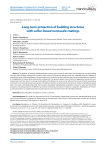
Long-term protection of building structures with sulfur-based nanoscale coatings
Статья научная
The problem of creating reliable protective coatings that increase the mechanical characteristics of concrete building structures (piles, bridges, ceiling arches, tunnels, chutes, culverts, wells, paving slabs and curbs, etc.) operated under the influence of atmospheric factors and groundwater is of great importance. Currently, the most effective way to prevent degradation of materials is the application of various kinds of protective compounds. That protects against various factors of aggressive natural and manmade impact and thus allows increasing the durability of buildings and structures by reducing the amount of water penetrating into the pores. To provide long-term protection of building materials, it is proposed to treat porous surfaces of building materials with a new sulfur-containing compound. The innovative developed impregnating composition is based on sulfur and it provides protection of building materials of different nature from weathering and corrosive media for a long time. Modification of the proposed composition can significantly improve performance and increase the service life of building materials.
Бесплатно
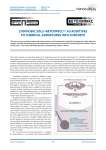
Lyophobic sols «БЕТОПРЕСС»® as additives to chemical admixtures into concrete
Статья научная
The article presents an innovative approach to enhancing cement concrete, bordering on a scientific breakthrough, and explains it in a way that is easy to understand. The core concept is the integration of a reactive agent with a chemical fluid to augment the material and endow it with novel characteristics. The technique, as suggested by the author, involves utilizing lyophobic sols that they have formulated as admixtures, combined with aqueous solutions of chemical additives produced by Russian companies. Due to the inclusion of these Nanostructured sols in the chemical additives, heavy cement concrete treated in this manner shows remarkable resilience. It remains unaffected by repeated freeze-thaw cycles, even when immersed in saline or mineral-rich waters. Furthermore, this advanced concrete does not demand any special measures for protection, maintenance, or repair, nor does it require additional waterproofing.
Бесплатно
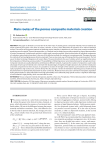
Main routes of the porous composite materials creation
Статья научная
This paper is devoted to an overview of the main ways of creating porous composite materials. Porous materials are solids containing free space in the form of cavities, channels, or pores, which determine the presence of an internal interfacial surface. The analysis of the general methods of obtaining porous materials. A deposition is one of the most common methods for producing porous materials. Thermal decomposition, as a method used to obtain porous oxide materials by thermal decomposition of various compounds. Hydrothermal synthesis is widely used to produce zeolites. Selective dissolution of individual components of a substance using chemical reactions is also one of the effective methods for creating or increasing porosity. The paper discusses the methods of forming highly porous refractory materials. There are two main ways of forming refractory ceramic products. The first way is the direct sintering of dispersions of ceramic fibers. The second method is the use of a binder, which can significantly reduce the temperature of obtaining a porous product. The possibilities of obtaining porous nanocomposites based on aerogels are shown. Composite materials are usually obtained by combining two different materials. In general, the creation of composites is used to take advantage of each type of material and to minimize their disadvantages. Aerogels are fragile substances. But with the introduction of another component into their structure, it is possible to increase the strength of the material. Such materials have the desired optical properties, high surface area, and low density like silica aerogel. A review of methods for obtaining porous materials using the phenomenon of spinodal decomposition has been carried out. Materials whose structure is formed in microphase separation during polymerization or polycondensation have high permeability and a sufficiently large specific surface. A significant advantage of such materials is high porosity, which can reach 80% or more.
Бесплатно
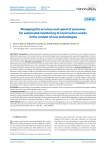
Статья научная
Introduction. Existing automated construction inspection technologies do not allow the user to select the level of detail. At the same time, in the context of the use of nanotechnology, there is a growing need to expand the capabilities of monitoring and control of construction projects. The aim of the research is to develop, implement software, and validate a technology for controlling the speed and accuracy of constructing three-dimensional models from dense point clouds for automated monitoring of construction works. Materials and methods. The research is based on the methodology of non-binary data trees, including the method of constructing octant trees. An unmanned aerial vehicle with an aerial laser scanner, a ground-based scanning total station, and specialized software were used, including the web application “Management System for Monitoring Construction Works on Objects that have undergone state expertise” developed with the participation of the authors. Results and discussion. In the course of the study, a technology was developed and implemented in software that allows the user to select the required balance between accuracy, degree of detail of monitoring and control data for construction work and time costs and computing power requirements. The comparison is made between a construction project, presented in the form of a building information model, and a three-dimensional model of a real object, obtained from a dense point cloud. The degree of comparison accuracy is set by choosing the level of octrees used. By default, the web application uses level eight. However, in the early stages of construction, when the geometric parameters of a dense point cloud deviate significantly from the design boundaries, the ninth, tenth and other levels can be used. In this case, the accuracy and degree of detail increases. Positive and negative deviations are visualized in red and blue colors, respectively, which allows the user to monitor and control the progress of work at the site. Conclusions. The developed technology can be used by customers and other decision makers to control and monitor work.
Бесплатно
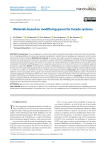
Materials based on modified gypsum for facade systems
Статья научная
Introduction. The use of gypsum in construction systems exposed to atmospheric influences involves the introduction of modifying additives of various types: polymer compositions, mineral fine and nanodisperse components, which can also be products of other industries. Methods and materials. To increase the weather resistance of gypsum stone, its strength characteristics and water resistance, the research considered a complex method of modifying gypsum binder by introducing aqueous solutions of polycondensation resins that harden in the material and nanocomponents. The experiment to assess the effect of the composition of complexly modified gypsum on its properties was carried out on the basis of the matrix of a complete quadratic three-factor experiment. Results. The strength of a complex modified gypsum stone during compression and bending increases by 30% and 25%, respectively, during 80 days of storage in the air. The compressive strength is 60 MPa, and the bending strength is 12 MPa. The samples can withstand 150 cycles of alternating freezing and thawing. Discussion. The introduction of polymer additives into the composition of the gypsum mixture leads to the fact that the gypsum during hydration creates a framework of crystalline aggregates of dehydrate, and the resin, when cured, forms a continuous polymer matrix. The polymer gypsum has the property of increasing the strength over time due to the ongoing polymerization of the resin. Conclusion. A weather-resistant gypsum-containing material was obtained. The use of man-made waste makes it possible to solve the problem of their disposal, which determines the reduction of the negative load on the environment. The methodology for assessing the weather resistance of gypsum stone, and, first, frost resistance, was tested.
Бесплатно
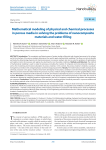
Статья научная
Introduction. The complexity and laboriousness of system studies of physical and chemical processes in the volume and at the interface of the porous medium determines the need to apply mathematical modeling. This allows not only to identify and study the determining physical and chemical processes in a porous medium, but also to solve the problems of optimization and optimal control of processes and regimes by selecting the most favorable conditions. Methods and Materials. The method of mathematical modeling is used to study the processes, including the creation of composite and nanocomposite materials, as well as the moistening and moisture absorption in porous materials. In this context, the porous material is treated as a pseudohomogeneous medium with averaged physical and technological parameters. Results. The mathematical models of physical and chemical processes in the porous medium have been developed, the boundary conditions have been formulated, physical and effective constants have been determined. The processes in porous medium during metallization of carbon-graphite fibrous material, moistening of compacted textile material by an air flow, and moisture absorption by porous construction materials have been studied. Discussion. The adequacy of mathematical models to real physical and chemical processes is discussed. The results of calculations obtained by modeling equations implemented in the form of computer computational algorithms and experiments are compared. Conclusions. The effectiveness of the method for studying physical-chemical processes in a porous medium and for calculating optimal values of technological parameters has been established. ACKNOWLEDGEMENTS. The research was carried out with the financial support of Moscow State University of Civil Engineering. (Contract No. PSUAC/K-23 dated 05.06.2023) within the 2023 competition for basic and applied research (R&D) by scientific teams of organizations – members and strategic partners of the Industry Consortium “Construction and Architecture” in order to implement the Development Program of Moscow State University of Civil Engineering and Architecture for 2021–2030 as part of the Strategic Academic Leadership the “Priority-2030”.
Бесплатно

Method of obtaining calcium silicate for construction
Статья научная
Introduction. Calcium silicate is one of the well-known building materials. Its structure determines the ability of such nanostructured additives to form a secondary structure – a fractal (volumetrical) network with which cement grains interact. The addition of nanomodifying additives to improve the technology of cement production will reduce the space dimension in which molecules are sorbed on the cement grain, and, accordingly, increase the rate and efficiency of its blocking. Methods and materials. The paper proposes a method for obtaining calcium silicate from soda ash production waste. The sol-gel method for the synthesis of individual nanomodifiers in the silicate form will improve the technology for producing concretes by forming a solid phase state of the modified structure of a cement stone. In the production of soda ash, the land plots (sludge accumulators) are allocated for the collection of production waste (distiller liquid). In this regard, the acute problem is a disposition of industry waste, because the area allocated for sludge accumulators is limited. Results and discussions. The study revealed that the addition of certain components allows us not only to reduce the required firing temperature, but also to affect the nanostructure of the resulting product. The range of values of the content of additives per 5 g of calcium silicate: С – 0.2÷0.4; S – 0.3÷0.5; ZnO – 0.1÷0.3; P2O5 – 0.3÷0.5; NH2CONH2 – 0.3÷0.3. According to the obtained matrix of conditions, 16 samples of substances were prepared. Nanomodification of cement stone leads to its hardening in the early stages of structure formation. Conclusion. The addition of hydroperite to calcium silicate significantly increases the hardness of the final product; when coal, sulfur, zinc oxide and phosphorus pentoxide are added as components, the hardness and structure of the compound changes. Thus, the use of a nanostructured cement additive based on calcium silicate obtained by qualified processing of the main waste that is part of the distiller liquid - calcium oxide, will improve the quality of concrete by improving the technology of cement production
Бесплатно
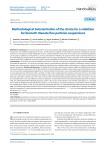
Статья научная
Introduction. The current stage of the construction industry and building materials science development involves the introduction and widespread application of nano- and fine particles capable of improving the properties of traditional materials. However, it is necessary to provide stabilization of nano- and fine-dispersed components in the cement system. Plasticizing additives can be used as stabilizers. It is important to set their concentration. Therefore, the purpose of this study is outlined, which lays in the methodological substantiation the stabilizing effect of various types of plasticizers on the suspension of fine synthetic bismuth titanate used in the modification of cement systems, and the establishment of the limits of their optimal concentrations. Materials and methods. The research is aimed at establishing the limits of optimal concentrations of polycarboxylate and sulfonaphthalene formaldehyde plasticizers. The limits of plasticizers optimal concentrationsis determined withdye solubilization method, surface tension and conductometric methods, and studies on establishing the stabilizing effect of plasticizers on a bismuth titanate fine particles suspension. Results and discussion. To establish the limits of the optimal concentration capable of stabilizing fine particles of bismuth titanate in suspension, CMC is determined by the dye solubilization method, surface tension and conductometric methods. It is found that a polycarboxylate plasticizer is characterized by one CMC point, and a sulfonaphthalinformaldehyde plasticizer is characterized by two CMC points: CMC1 and CMC2. At CMC1 point unstable spherical micelles are formed, which turn into stable ones at the CMC2 point. At concentrations exceeding the CMC2 value, polymorphic transformations of spherical micelles into nonspherical asymmetric micelles occur. The same can be traced for the polycarboxylate plasticizer CMC only in one stage. It can also be concluded that it is not reasonable to increase the plasticizer concentration above CMC for polycarboxylate plasticizer and above CMC2 for sulfonaphthalinformaldehyde plasticizer, which is due to structural changes in the micelles of plasticizers. It is assumed that in order to stabilize bismuth titanate fine particles, it is necessary to choose the plasticizers concentration within the limits not exceeding the values of CMC for polycarboxylate plasticizer and CMC2 for sulfonaphthalinformaldehyde plasticizer. Conclusion. Concluding results demonstrate the limits of optimal plasticizers concentrations for the stabilization of bismuth titanate fine particles suspension. For polycarboxylate plasticizer this range of concentrations is 1.1 – 1.5 g/l; for sulfonaphthalinformaldehyde plasticizer its 2.2 – 4.0 g/l.
Бесплатно
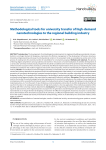
Статья научная
Introduction. The development of methodological monitoring tools to implement building nanomaterials into production is an integral element of designing a mechanism for effective management of the development of business structures. University entrepreneurship and research and educational centers in the ecosystem trend are considered as central actors in the process of creating tools for university transfer of nanobinders for construction purposes. Methods and materials. The process of forming digital competencies among students and teachers in the process of commercialization of scientific developments of a construction university (institute, faculty, department) should be considered as the result of fractal interactions. The development of the innovative ecosystem of the university is achieved by the effective implementation of the process of transferring the results of intellectual activity for the creation of gypsum and ceramic nanocomposites, which are in demand by the regional construction industry. Results. The intellectual and technological potential of universities that train bachelor’s and master’s students for the construction industry determines the prospects for the successful development of the industry in an innovative society. Accelerated promotion of investment developments, requested nanotechnologies of universities, provides universities with additional extrabudgetary funding. On the example of the development of technology for producing small-piece wall and partition products based on nanostructured gypsum binders, they were tested in experimental industrial conditions. Discussion. Effective methodological tools for the transfer of nanotechnological university engineering to the construction industry are: the creation of basic departments at enterprises and the successful functioning of research and educational centers, the participation of employers in educational and industrial practice, etc. From the point of view of laborious commercialization and transfer of scientific developments, the effective way from the idea to the widespread introduction of high-tech products is the real application of the intellectual potential of the teaching staff of the university, institute, departments. Conclusions. The engineering of methodological tools for reliable monitoring of the attractiveness of the regional business ecosystem for the generation and development of transfer processes of popular nanomaterials is an integral element of designing a mechanism for effective management of business structures in construction. Due to the formation of the innovative ecosystem of the university, an effective implementation of the process of commercialization of the results of intellectual activity in the field of nanotechnology, which are in demand by the construction industry of the region, is achieved.
Бесплатно
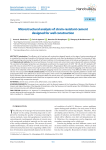
Microstructural analysis of strain-resistant cement designed for well construction
Статья научная
Introduction. The efficiency of oil and gas well construction depends largely on the stage of casing cementing and is completed by checking the quality of its fixing by various methods, most often by geophysical methods. The necessity of highquality cementing and ensuring the quality of technical conditions in the subsequent years of oil and gas well operation is the main task. Materials and methods. Microstructural features of cement slurries and cement stone were analyzed with advance methods. The essential technological properties were developed according to the requirements of GOST 1581-96 and API standards (API spec.10B). Class G cement (PCT-I-G) was used for all formulations. Polypropylene fiber and expanding additive СMA were used to increase impact resistance and to ensure tight contact with the confining surfaces of the obtained plugging stone. Microstructural analysis of the obtained cement stones and developed plugging mortars was carried out by X-ray diffraction (XRD) and scanning electron microscope (SEM). Results and discussion. The results of the study showed that the expanding additive in tandem with polypropylene fiber works effectively to ensure the integrity of the cement ring. Conclusion. Microstructural analysis of plugging stones showed a tight bond between polypropylene fiber and cement stone at a concentration of – 0.25%. The expanding additive is fully hydrated and the obtained cement stone has no expansion cracks at 7 days. The developed grouts with a water-cement ratio of 0.44 showed high compressive strength.
Бесплатно
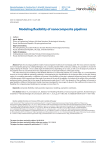
Modeling flexibility of nanocomposite pipelines
Статья научная
Pipes for oil and gas pipelines made of nanocomposite materials are increasingly used. The most common manufacture of composite piping is by winding fiberglass onto a rotating mandrel. With continuous winding, it is possible to choose the angle of laying the threads – the so-called angle of reinforcement. Depending on its value, as well as on the angle of curvature of the pipeline when its axis deviates from the straight direction, the strength indicators of the pipe change. The article discusses the modeling of the flexibility behavior of a composite pipeline of a curved shape. It is curved pipelines that are in the most difficult operating conditions, accompanied by the manifestation of the Karman effect in the pipe turning angles. As a modeling parameter, a coefficient of increase in the flexibility of the pipe is adopted. Influencing factors are the angle of reinforcement of the composite and the angle of curvature of the axis of the pipeline. An analysis of the results of the calculation performed earlier showed that in the range of reinforcement angles from 0о to 85о the dynamics of the coefficient of increase in pipe flexibility is different. Mathematical models have been developed for two ranges of values for the coefficient of increase in the flexibility of a composite pipe. Modeling error averages no more than 2%.
Бесплатно
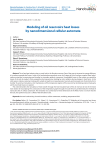
Modeling of oil reservoirs heat losses by nanodimensional cellular automata
Статья научная
The oil and gas industry plays a crucial role in the Russian economy. One of the ways to increase its energy efficiency is to reduce unproductive losses. Losses of oil and petroleum products occur at all stages of the oil and gas complex from hydrocarbon extraction to processing and transfer to secondary product consumers. Unavoidable losses in the system are caused by losses of oil and oil products from evaporation during excessive heating by solar radiation during storage in tank farms. In the cold season, intensive external cooling with outside air leads to increased product viscosity and increased cost of electricity for its transfer. To avoid such situations, strict maintenance of the temperature regime of the reservoir by minimizing external heat gains and its own heat losses is re-quired. The article describes the simulation of heat transfer through the heat-insulated wall of the oil reservoir of one of the linear main station of oil pumping. The construction of the temperature graph through the outer fence is performed by the method of nanoscale cells of cellular automaton. The simulation was carried out for three dimensions of the field of cells. It is shown that for the task, the optimal structure is a field of 560 simulation cells.
Бесплатно
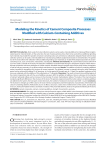
Modeling the Kinetics of Cement Composite Processes Modified with Calcium-Containing Additives
Статья научная
Introduction. Rock wastes from dust collection systems can be used as mineral additives for making artificial conglomerates based on mineral binders. At the same time, the size of waste particles allows them to be used without additional grinding. Such materials may include fine powders of calcium-containing rocks such as limestone, wollastonite, diopside. Waste rock from dust collection systems can be used as mineral additives for manufacturing artificial conglomerates based on mineral binders. The particle size of the waste allows their utilization without additional grinding. Such materials can include finely dispersed powders of calciumcontaining rocks, such as limestone, wollastonite, and diopside. Methods and materials. We used Portland cement CEM II/A-W 32.5F was used as a binder in the study. The selection of additives was determined through a comparative analysis of their thermodynamic properties with those analogous to clinker minerals. Standard research methods were used to study cement composites, as well as mercury porometry, X-ray phase analysis and electron microscopy. Results. The addition of calcium-containing additives makes it possible to strengthen the structure of cement materials. The greatest increase in strength during the initial hardening period can be achieved by adding 2% of limestone. In the late period of strength gain (in 14 days), the greatest hardening of the stone was obtained with the addition of 9% wollastonite or 7% diopside. Discussion. The results of cement stone diffractogram of the control composition and with the use of additives are given. With the addition of additives, there is a decrease in the intensity of calcium hydroxide reflexes and an increase in the intensity of calcium hydrosilicates reflexes. The study of the macrostructure revealed a significant difference in the structure of the stone. The porosity analysis showed that when calcium-containing additives are added into the system, the total pore volume decreases, the number of small pores increases (size 0.003–1.2 μm). Conclusion. The increase in strength up to 48% is due to the close chemical composition and thermodynamic characteristics of the binder and calcium-containing additives. Wollastonite, due to its fibrous structure, creates micro-reinforcement of the system, and diopside, in its turn, having the highest hardness and elastic modulus of the presented additives, leads to the greatest hardening of the stone.
Бесплатно
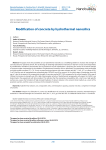
Modification of concrete by hydrothermal nanosilica
Статья научная
The paper shows the possibility to use hydrothermal nanosilica as a modifying additive to increase the strength of concrete based on portland cement. The technology of obtaining hydrothermal nanosilica in the form of sols and nanopowders by ultrafiltration membrane concentration and cryochemical vacuum sublimation is proposed. The results of increased strength of concrete under compression by the addition of hydrothermal nanosilica Sol are presented. The experiments were performed on highly mobile concretes (ST = 10–19 cm) on equal-moving mixtures with water-cement ratio W/C = 0.61–0.71 at a dose of SiO2 2 wt.% and the rate of superplasticizer polycarboxylate 0.95±0.05 mas.% by cement. At the initial stage of hardening when the age is 1 day, the increase in the compressive strength of concrete reached 90–128% compared to the control sample. At the age of 28 days the increase in strength was 40%. High chemisorption activity of hydrothermal nanopowder with respect to Ca(OH)2 was determined in the experiment with lime medium. This indicates that the amorphous nanoadditive SiO2, which has a high specific surface area, causes the formation of high-strength hydrates of calcium silicates in the cement (lime) medium as a result of the pozzolan reaction, and this causes an increase in the strength of concrete.
Бесплатно
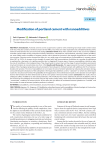
Modification of portland cement with nanoadditives
Статья научная
Introduction. Portland cement slurries (suspensions) used for well cementing have high water-cement ratios (0.45–0.6). They also contain a minimum amount of inert fillers, must have zero water separation and controlled hardening with a minimum time between the start and end of setting. Literature review. Most of the scientific work on the use of nano-additives in binder systems relates to the construction industry. Nanosilicon, nanotitanium, nanocarbonate, nanoclays, carbon nanofibers, etc. were widely used as modifiers of cement systems, which showed an increase in the strength characteristics of the resulting concretes. Literature review showed that there is a very wide range of concentrations of nanoadditives in cement systems from 0.001 to 10.0%. An increase in the strength of cement with high concentrations of additives in a number of publications is explained by a decrease in its capillary porosity due to clogging of the pore space. However, nanoadditives should not play the role of microfillers in the hardened stone. They should work in cement slurry at the stage of cement hydration and cement structure formation at concentrations less than 1.0%. Results and Discussion. The paper presents the results of experimental studies of the rheological properties and early strength of stone based on Portland cement with additives (0.01%) of nanocarbonate and nanoiron. The role of nanoadditives is to increase the rate of cement hydration by reducing the activation energy, and accelerating the dissolution of the solid phase in the liquid. Nanoadditives can be a “substrate” on which two-dimensional nuclei of a new phase are formed. The probability of the appearance of two-dimensional nuclei on the substrate is much higher than for the formation of three-dimensional nuclei of a new phase in the bulk of the solution. Conclusion. The results show an ambiguous effect of additives on the tested parameters, which indicates the need to optimize the amount of additives. One of the reasons for the ambiguity of the results may be high water-cement ratios, which reduce the likelihood of the formation of “constrained” conditions in cement slurries. At the same time, the effects of accelerated cement hydration are “levelled” and the number of contacts between hydration products is reduced.
Бесплатно

